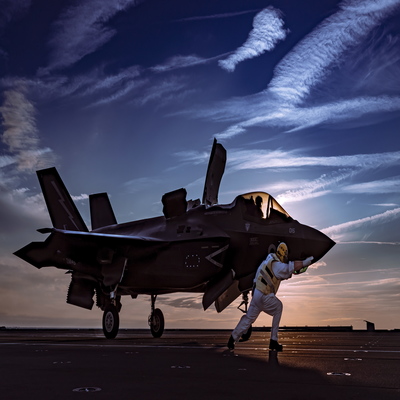This module will provide students with an understanding of the principles, concepts and analysis techniques of rotary-wing (RW) platforms.
At a glance
-
- Dates
-
- Please enquire for course dates
- Duration5 days
- LocationCranfield University at Shrivenham
- Cost£2,500 - Standalone Short Course fee Concessions available
What you will learn
On successful completion of this course you will be able to:
- Describe the aerodynamic principles of RW flight,
- Estimate RW component power requirements,
- Evaluate aspects of the performance of a RW platform.
Core content
Introduction:
RW a/c definitions; configurations and layout.
Rotor axial flight performance:
Rotor definitions, thrust, induced velocity, induced power, profile and climb power in axial flight, flow states in axial flight, effects of blade geometry, rotor coefficients, disc loading and blade loading, rotor figure of merit, ground effect,vertical autorotation.
Rotor control:
Collective and cyclic controls, feathering, flapping and lagging; fully-articulated, hingeless, elastomeric and bearingless rotors; teetering rotors, swash plate and spider, rotor RPM control, rotor moments.
Rotor forward flight:
Thrust, induced velocity, induced power and profile power in forward flight, blade cyclic variation of speed and incidence, flap back, rotor limitations due to compressibility and stall and the effect on aircraft performance, dynamic stall effects, tip modifications, ABC, compounding, etc.
Rotary wing aircraft performance:
Parasite power, minimum power and minimum drag speeds, maximum speed, range and endurance, take-off and climb, forward flight descent and autorotation, hover ceiling IGE and OGE.
RW aircraft trim, stability and control:
Control at the hover and in forward flight, effect of rotor head design, rotor stability with respect to incidence and speed, rotor lag, a/c longitudinal, lateral and directional static and dynamic stability at the hover and in forward flight. manoeuvrability and agility.
Cross-couplings and vibrations:
Examples of cross-coupling effects, ground resonance, introduction to helicopter vibration, vibration absorbers, ACSR.
Transmissions:
Transmission layouts for single and multi-rotor helicopters.
Tutorials, practical demonstrations and a case study.
Upgrade to a professional qualification
When taken as a Short Course for Credit, 10 credit points can be put towards the Military Aerospace and Airworthiness MSc.
Find out more about short course credit points.
Concessions
A limited number of MOD sponsored places are available.
Location and travel
Cranfield Defence and Security (CDS) is a Cranfield School based at the Ministry of Defence establishment on the Oxfordshire/Wiltshire borders.
Shrivenham itself lies in the picturesque Vale of the White Horse, close to the M4 motorway which links London and South Wales. It is 7 miles from Swindon, the nearest town, which lies off the M4 at the hub of Britain’s motorway network.
Bath, Cheltenham, Bristol and Oxford are all within an hour’s drive and London less than two hours away by car.
All visitors must be pre-booked in at reception by the person they are visiting on the campus.
How to apply
To apply for this course please use the online application form.
Read our Professional development (CPD) booking conditions.
